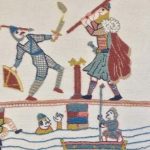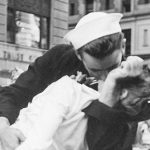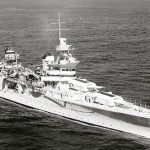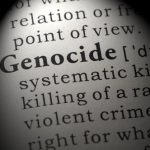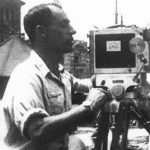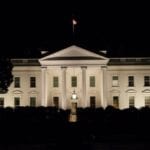 Our World
Our World  Our World
Our World  Movies and TV
Movies and TV The 10 Coolest Stars to Set Sail on The Love Boat
 History
History 10 Things You Didn’t Know About the American National Anthem
 Technology
Technology Top 10 Everyday Tech Buzzwords That Hide a Darker Past
 Humans
Humans 10 Everyday Human Behaviors That Are Actually Survival Instincts
 Animals
Animals 10 Animals That Humiliated and Harmed Historical Leaders
 History
History 10 Most Influential Protests in Modern History
 Creepy
Creepy 10 More Representations of Death from Myth, Legend, and Folktale
 Technology
Technology 10 Scientific Breakthroughs of 2025 That’ll Change Everything
 Our World
Our World 10 Ways Icelandic Culture Makes Other Countries Look Boring
 Our World
Our World 10 Ways Your Christmas Tree Is More Lit Than You Think
 Movies and TV
Movies and TV The 10 Coolest Stars to Set Sail on The Love Boat
 History
History 10 Things You Didn’t Know About the American National Anthem
Who's Behind Listverse?

Jamie Frater
Head Editor
Jamie founded Listverse due to an insatiable desire to share fascinating, obscure, and bizarre facts. He has been a guest speaker on numerous national radio and television stations and is a five time published author.
More About Us Technology
Technology Top 10 Everyday Tech Buzzwords That Hide a Darker Past
 Humans
Humans 10 Everyday Human Behaviors That Are Actually Survival Instincts
 Animals
Animals 10 Animals That Humiliated and Harmed Historical Leaders
 History
History 10 Most Influential Protests in Modern History
 Creepy
Creepy 10 More Representations of Death from Myth, Legend, and Folktale
 Technology
Technology 10 Scientific Breakthroughs of 2025 That’ll Change Everything
 Our World
Our World 10 Ways Icelandic Culture Makes Other Countries Look Boring
10 Forgotten Allies in World War II
The main actors on the Allied side in World War II, the Western democracies—the United States, Britain, and France—and the Communist Soviet Union, did most of the fighting and dying to keep Axis tyranny from taking over the world. The conflict sucked in nations whose territories were directly invaded and colonies of the European powers, who were expected to fight for the mother country.
In this list, we remember the allies far from the main theaters of war and yet chose to stand up against the Axis as independent nations not beholden to a colonial master. Their involvement may seem minimal compared to the major combatants, but nevertheless, they were no less important in the context of ultimate victory over the Axis.
Related: 10 of the Most Ingenious Deception Tactics Used in War
10 Dominican Republic
The Dominican Republic declared war on Japan a day after its December 7, 1941, sneak attack on Pearl Harbor and on Germany on the 11th. The nation did not mobilize its military, which did not see combat. However, over a hundred Dominicans served in the U.S. Armed Forces. The country’s greatest contribution was in offering the persecuted Jews of Europe a refuge at a time when most nations, including the United States, were turning them away.
Admittedly, President Rafael Trujillo’s motives were less than altruistic. The brutal dictator wanted to salvage his international image after the October 1937 Dominican massacre of Haitians. He also wanted white European immigration and assimilation to lighten the Dominicans’ skin tone to separate them from the black Haitians.
However, to the suffering Jews, Trujillo was a godsend. One refugee commented on the irony: “The person who wanted to help us was not a humanist. But did we have a choice? Hitler, the German racist, persecuted us and wanted to murder us. Trujillo, the Dominican racist, saved our lives.”
The 750 Jews who escaped to the Dominican Republic settled in the agricultural community of Sosua. After the war, many left for other countries, but hundreds opted to stay on. Sosua remains a thriving Jewish enclave.[1]
9 Colombia
Unlike other Latin American countries, Colombia did not declare war on the Axis after Pearl Harbor but did break off diplomatic relations. However, Colombia’s proximity to the Panama Canal, which the Allies feared would be bombed by the Germans or Japanese, made it strategically important.
Colombia, at this time, still resented the U.S. for taking away Panama from them in order to build the canal, but America supplied Colombia with military equipment via the Lend-Lease Program. Colombia then allowed the U.S. to station troops in the country.
In June 1942, the Colombian schooner Resolute was sunk by the German U-505 with the loss of six lives. Colombia responded by declaring a “state of belligerency” against the Axis. In 1944, the Colombian destroyer ARC Caldas was escorting a tanker to the canal when it spotted a U-boat and engaged it, with an indecisive result. It was Colombia’s only hostile military action of the war.[2]
8 Haiti
Haiti declared war on Japan on December 8, 1941, and on Germany, Italy, Bulgaria, and Romania in the following days. The United States gave Haiti six aircraft fitted with bombs to undertake patrols in the Caribbean Sea and attack German submarines. In 1942, the Haitian Air Corps was formed, and five of its men volunteered to fight in the U.S. Air Force.
The five Haitians got their first taste of the discrimination that went with being black in America’s segregated South. They trained at the Tuskegee Airfield in Alabama and were integrated into the famed African-American Tuskegee Airmen, who saw action in Europe. One of them, Lt. Ludovic Audant, recalled, “We were flying against two enemies, the Germans and discrimination. We had a point to prove, not just for ourselves, but for our country and all black people the world over.”
It would be many years before the Haitian pilots were belatedly honored for their service. In 2009, the last surviving Haitian Tuskegee airman, Raymond Cassagnol, was a special guest at President Barack Obama’s inauguration, and the next year, he received the Congressional Medal of Honor.[3]
7 Chile
Chile and Argentina were the two South American republics where pro-Axis sentiment was strongest. Lingering anti-Americanism, an influential German minority, and the effects of the Great Depression made Chile opt to stay neutral after Pearl Harbor. The Axis exploited this by establishing deep espionage networks in the country and neighboring Argentina. The Japanese Foreign Minister was explicit about Japan’s imperial designs on the continent, with Chile “a starting point to begin our operations against Pan-Americanism by attacking the weakest members, viz., Peru, Bolivia, and Ecuador.”
Things began to change when the German invasion of the USSR angered many pro-Soviet Chileans in the labor movement. In April 1942, a new pro-Allied president, Juan Antonio Rios, assumed office, and in January the next year, Chile broke off diplomatic relations with the Axis.
Chile’s most important contribution to the Allied cause was the breaking up of a German spy ring headquartered in Valparaiso. The Nazis had a cache of weapons and cash to undertake the bombing of Chilean mines, which supplied the Allies with copper, tin, and nitrate.
More alarmingly, they had been plotting to bomb the Panama Canal. Had such an operation succeeded, it would have crippled Allied logistics and mobility, with devastating consequences for the war effort. As one Chilean official commented, “It could have changed not only Chile’s history but the history of the whole world.”[4]
6 Cuba
Two days after Pearl Harbor, Cuba declared war on Japan, one of the first Latin American countries to do so. It also declared war on Germany and Italy on the 11th. Cuba’s strategic location was important in protecting the Panama Canal and Allied shipping lanes in the Caribbean. President Fulgencio Batista signed a treaty that allowed the United States to build bases in Cuba in addition to the already existing one in Guantanamo Bay to more effectively fight German U-boats.
Cuba also directly participated in the Battle of the Caribbean, with an American naval historian praising its small but efficient navy as the “most cooperative and helpful of all the Caribbean states.” On May 15, 1943, the Cubans sank a U-boat near Havana.
In August 1942, Cuban police arrested Nazi spy Heinz Luning, who had set up operations in Havana to feed shipping information to the U-boat command. He was caught before he could do any damage, was tried, found guilty, and executed, the only German spy in Latin America to suffer such a fate.
Aside from its naval involvement, Cuba provided the Allies with a steady supply of its chief export, sugar.[5]
5 Argentina
It is easy to overlook Argentina as an ally in the war, as it was pro-Axis for most of it, only breaking off relations with Germany in 1944 and belatedly and reluctantly declaring war on March 27, 1945. After the war, many fleeing Nazis found a safe refuge in Argentina.
Argentina’s population consisted mainly of European immigrants, the most influential of whom were Spanish, Italians, and Germans, who were naturally sympathetic to the Axis. The rest of the people coming from multi-ethnic backgrounds favored the Allies. The country declared its neutrality at the start of the conflict, but it nevertheless served as an excellent base for Nazi espionage operations.
In actual combat, however, Argentines fought for the Allies. Many were descendants of British immigrants, and the three British military services saw 4,000 Argentine volunteers, including hundreds of women, enlist. The Royal Air Force had 800 Argentine pilots and a special Argentine squadron No. 164. Its motto was “Firmes volamos” (Determined We Fly), and its insignia showed the British lion before the rising sun of Argentina.
One exceptional volunteer was Maureen Dunlop, who, after being refused as a fighter pilot because of her gender, flew planes for the Air Traffic Auxiliary, transporting them from factories to military airfields. Throughout her time at the ATA, she flew 38 different types of aircraft, including the Spitfire, Hurricane, Mustang, and Vickers Wellington bomber.
In a twist of fate, some RAF veterans flew again for Argentina, this time against the British, in the 1982 Falklands War.[6]
4 Mexico
Mexico cut diplomatic ties with Japan on December 8, 1941, and with Germany and Italy three days later. In May 1942, German U-boats in the Gulf of Mexico sank two Mexican oil tankers. On June 1, after Germany refused to apologize or pay compensation, President Avila Camacho formally declared war on the Axis. For the Mexican people, who ousted a dictator in their revolution, Hitler was just one more tyrant who needed putting away.
Although Camacho wanted to confine the country’s involvement to economic and material assistance, he and his military advisers handpicked the best and brightest Mexican aviators, including the son of a revolutionary hero, to train in the U.S. in July 1944. The result was Escuadron Aéreo de Pelea 201–Squadron No. 201– known as the Aztec Eagles, which was ready in time for the liberation of the Philippines.
Arriving in Manila in April 1945, the Aztec Eagles flew 795 sorties and bombing missions over Luzon in the following months to support American and Filipino ground troops. More Mexican flyers would have signed up in anticipation of the invasion of Japan had not the enemy surrendered that August.
The Aztec Eagles were the only Mexican unit to see combat. Still, an estimated 15,000 Mexicans saw service in the U.S. military, many hoping for American citizenship in exchange.[7]
3 Brazil
Even before Pearl Harbor, Brazil was already fully committed to the Allied cause. Its port of Natal, only 1,600 miles (2,575 kilometers) from Dakar, Senegal, was a stopover point for U.S. troops and supplies bound for Africa. Brazil received $100 million worth of military aid under Lend-Lease with the understanding that it would help defend the hemisphere if push came to shove.
Brazil tried to keep out of actual combat, but when the Germans sank four Brazilian ships, it broke off diplomatic ties with the Axis in early 1942. On August 22, it finally declared war. Building an effective fighting force from the woefully weak Brazilian military would take two years, but with assistance from the U.S., the Forca Expedicionária Brasileira (Brazilian Expeditionary Force) was ready by 1944. About 25,000 troops would ultimately serve in Europe.
Deployed to Italy, the Brazilians proved their mettle in capturing the menacingly fortified German strongpoint of Monte Castello, southwest of Bologna. Together with the U.S. 10th Mountain Division and supported by Brazilian-piloted Thunderbolts, the FEB swept the Germans from the mountain with such ferocity that impressed even the enemy. “Frankly, you Brazilians are either crazy or very brave,” one German officer told a Brazilian POW. “I never saw anyone advance against machine guns and well-defended positions with such disregard for life… You are devils.”
At Fornovo di Taro, the FEB covered itself in glory by trapping the entire German 148th Infantry Division—15,000 men, more than 4,000 horses, 1,500 vehicles, and 80 guns. Maj. Gen. João Baptista Mascarenhas de Moraes demanded unconditional surrender, and the helpless Germans had no choice but to capitulate to this unfamiliar but determined enemy. The Brazilians had taken the entire division intact, the only time this had happened in the whole Italian campaign.
The FEB continued its operations in Italy for the rest of the war. Mascarenhas returned home to a hero’s welcome and promotion to field marshal. However, Brazil never obtained its hoped-for permanent seat in the UN Security Council as compensation for its services. To this day, it still feels slighted by the U.S. failure to acknowledge its sacrifices.[8]
2 Nepal
“If a man says he is not afraid of dying, he is either lying or he is a Gurkha.” Thus did a British officer pay tribute to the world’s best and toughest soldiers—the Gurkhas of Nepal. With the British declaration of war, the Axis forces would now feel the terror of facing these elite warriors that had long been a fixture in the British Army. However, Nepal was an independent kingdom, and Hitler himself had presented King Tribhuwan with a beautiful German-made Rolls-Royce to obtain his military assistance.
But the Nepalese stood by the British, and its national army also mobilized, placed under the command of Lord Louis Mountbatten, and deployed at the Assam (India)-Burma frontier. They were “much the troops of an Independent Allied Power as are the Americans and Chinese,” wrote the London Times. The Nepalese court also donated money for the purchase of weapons and supplies and for the relief of victims of the London Blitz.
The Gurkhas, meanwhile, were sent to the North African and European theaters, where they saw action against Rommel’s Afrika Korps and fought across the entire length of Italy. In the battle of Monte Cassino, the Gurkhas managed to reach the walls of the mountaintop monastery itself and held on for nine days against relentless German attacks before a lack of ammunition forced them to withdraw.
In the Far East theater, the Gurkhas and the regular Nepalese troops helped hold back the Japanese in their March 1944 drive into India in the great battles of Kohima and Imphal. In Burma, we hear of the unbelievable exploit of Lachhiman Gurung, who singlehandedly defended his position against 200 attacking Japanese, losing his right arm and right eye in the process. The Nepalese regulars matched the heroism of their brother Gurkhas in dozens of encounters, like that of Capt. Bal Bahadur Silwal ambushed 200 Japanese with only 80 men without losing a single soldier.[9]
1 South Africa
The role of South Africa is often overshadowed by those of other British dominions like Canada, Australia, and India. South Africa may have been part of the Empire, but it was given sovereign status in 1934, and its decision to go to war was its own, not Britain’s.
In fact, its government at the start of the conflict was headed by Prime Minister JBM Hertzog, who was an anti-British Afrikaner still bitter about the genocide of one-sixth of the Boer population by the British. He was actually sympathetic to Hitler and wanted South Africa to stay neutral.
After a fierce debate in Parliament, Hertzog was voted out of office and replaced by pro-British Jan Smuts, who declared war on Germany on September 6, 1939. Though ill-prepared for war, the South Africans found the demoralized Italians easy pickings in the initial engagements in East Africa. But now they have to face the battle-tested Afrika Korps in North Africa, and at Sidi Rezegh, Gazala, and Tobruk in 1941-42, the South Africans experienced their first defeats.
Bouncing back, they redeemed themselves at El Alamein. With North Africa secure, Italy was next, and in July 1944, the South Africans spearheaded the capture of Florence. They smashed through the vaunted Gothic Line and on to the final Spring Offensive that finally knocked out Germany.
U.S. Gen. Mark W. Clark had nothing but praise for the South Africans: “Despite their comparatively small numbers, they never complained about losses. Neither did Smuts, who made it clear that the Union of South Africa intended to do its part in the war—and it most certainly did.”[10]
